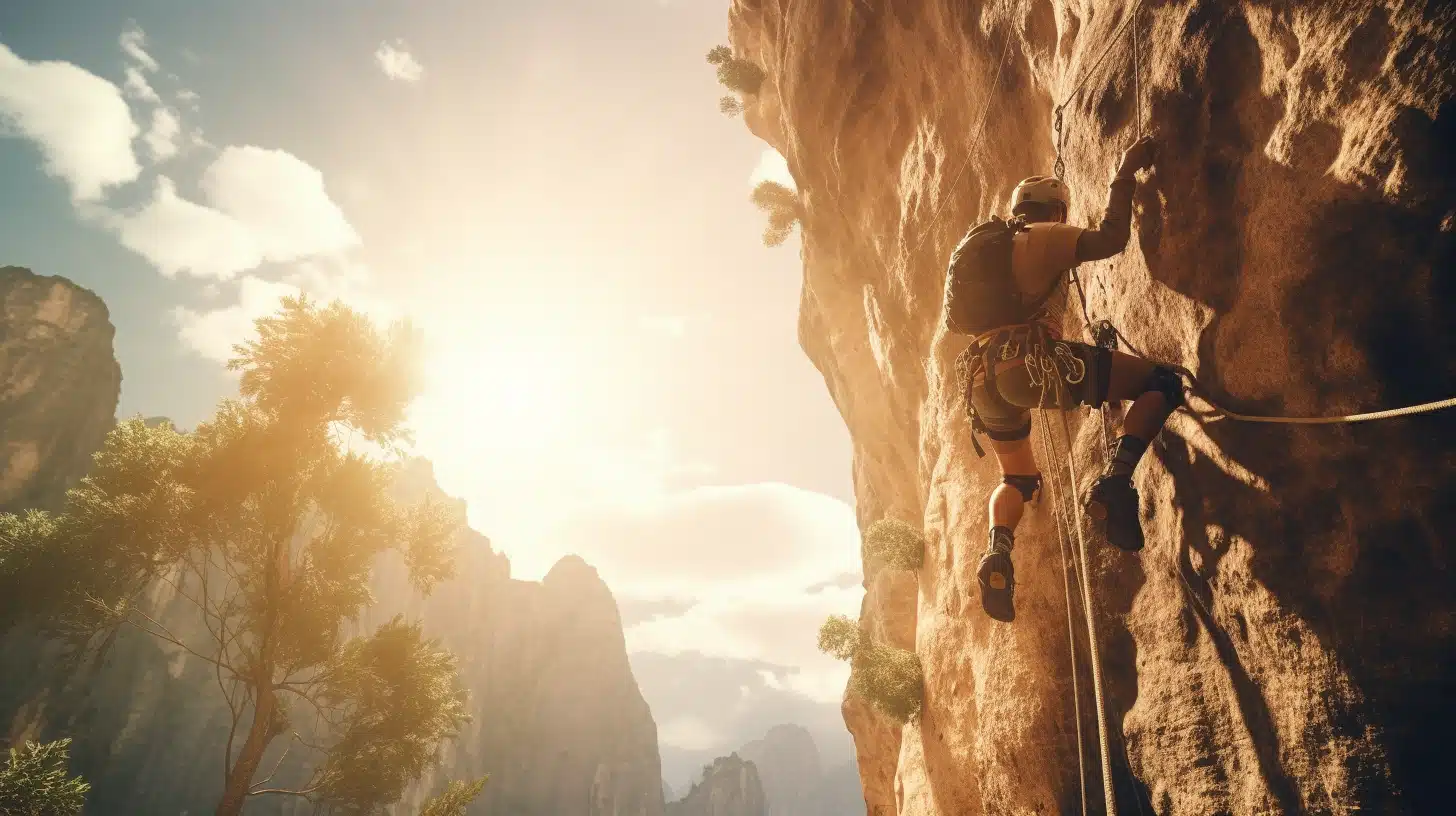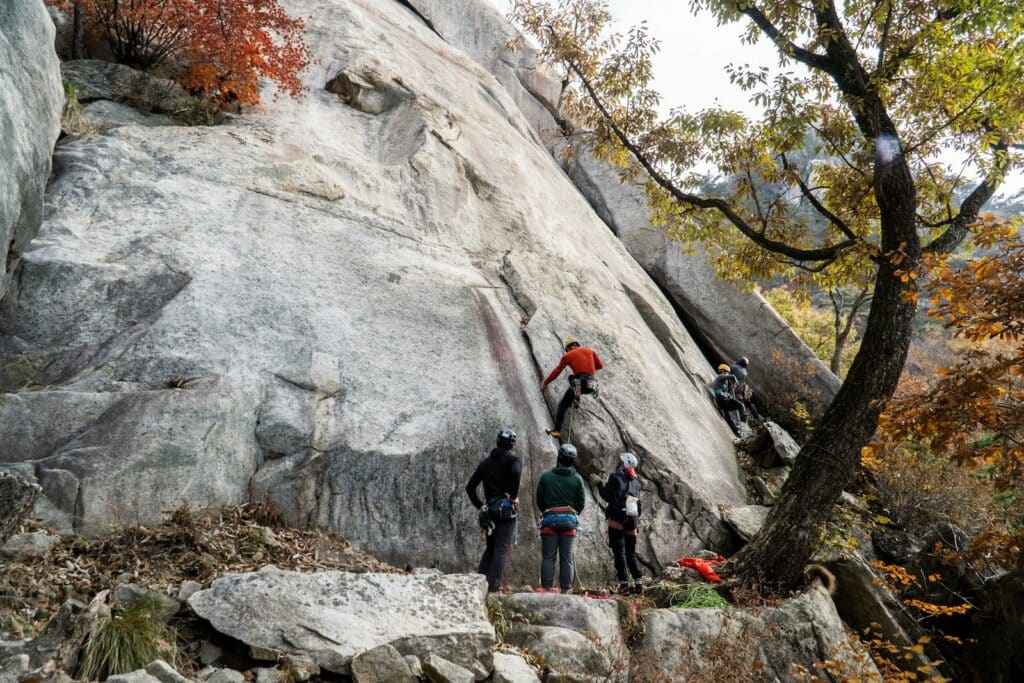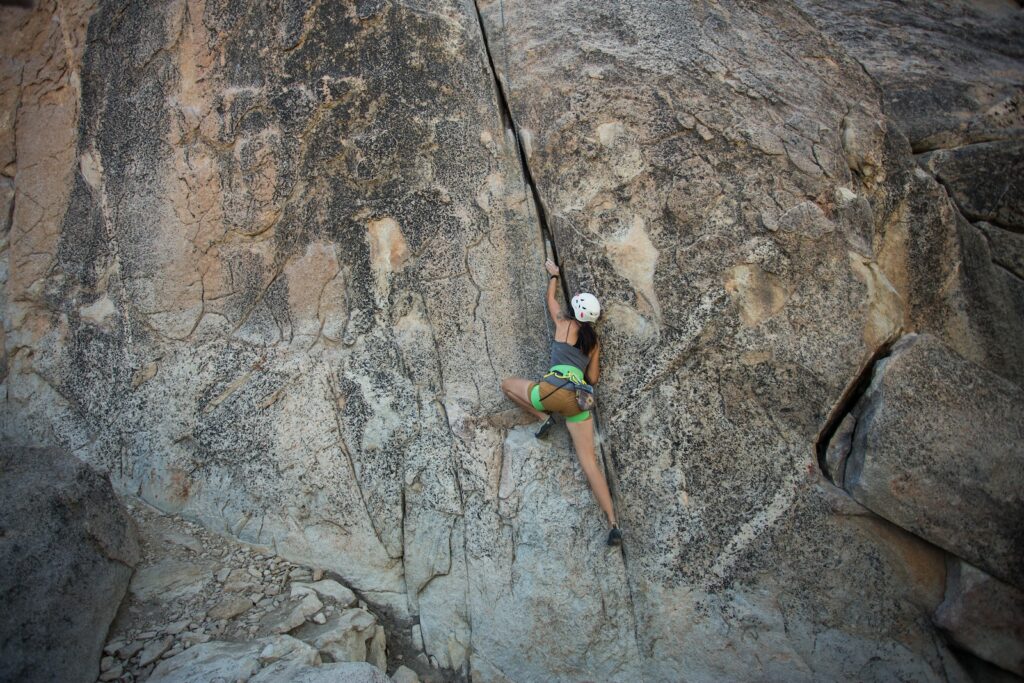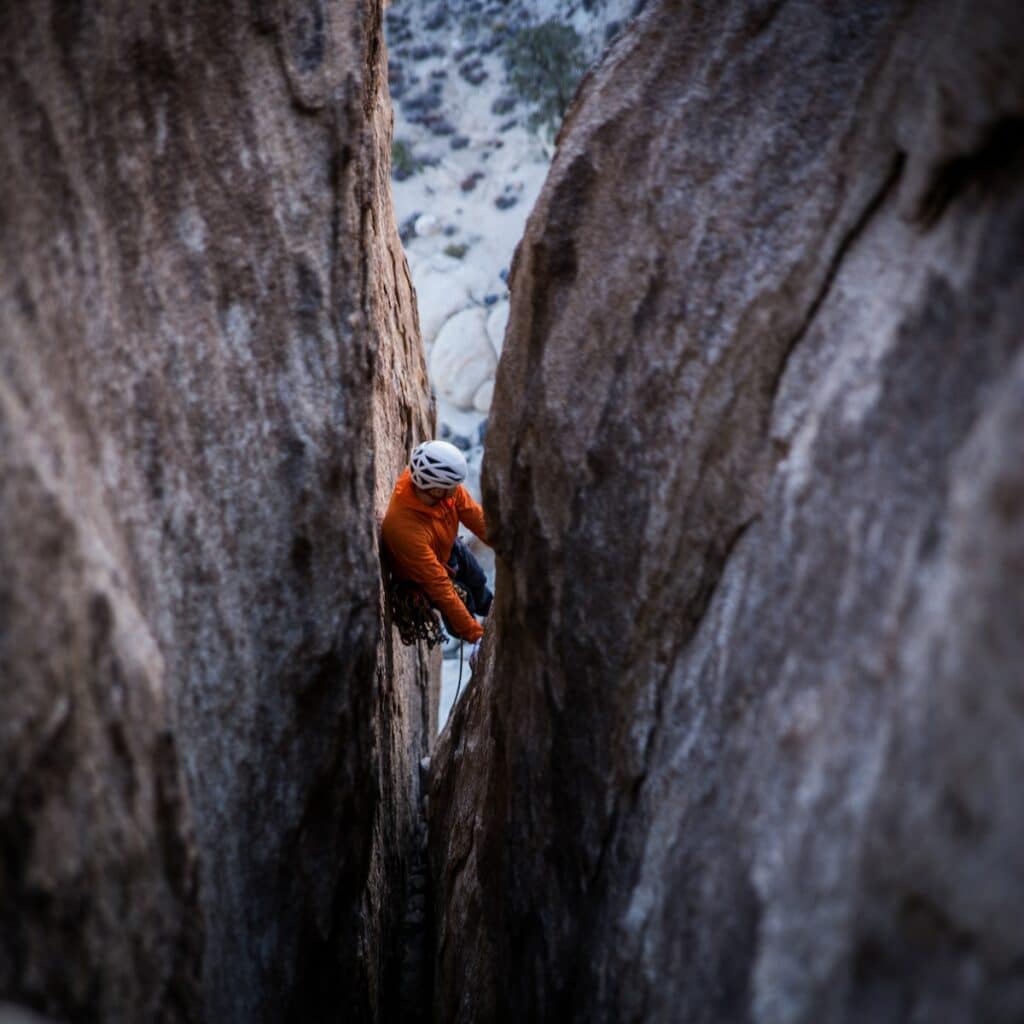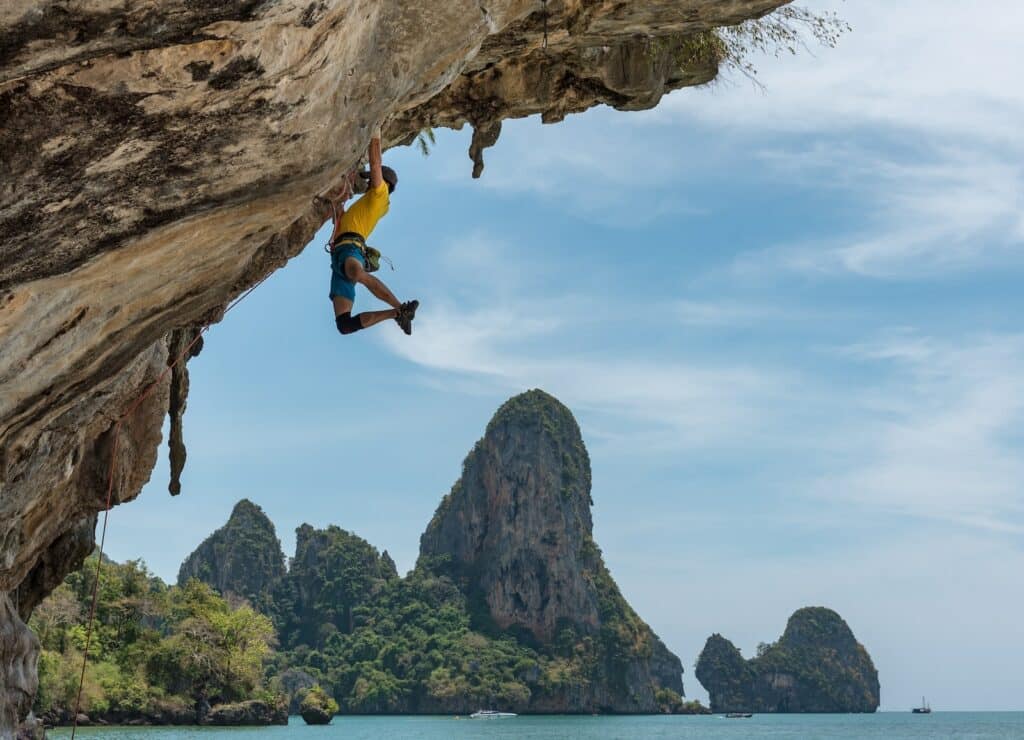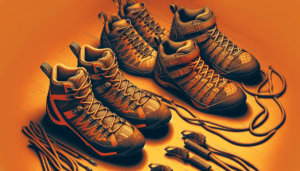Table of Contents
ToggleIntroduction to Trad Climbing
Trad climbing, short for traditional climbing, is a style of rock climbing that offers a unique and adventurous experience. In trad climbing, climbers place their own gear, such as protective devices and anchors, as they ascend a route, in contrast to sport climbing where fixed bolts are used for protection. This allows for a greater sense of self-reliance and connection with the natural features of the rock. Trad climbing allows climbers to explore a wide range of routes and challenges, including the exciting realm of offwidth climbing.
What is Trad Climbing?
Trad climbing involves placing and removing gear while climbing, relying on natural features of the rock for protection. Climbers use a variety of gear, including cams, nuts, slings, carabiners, and other equipment, to create anchor points and protect against falls. The ability to assess the rock’s features and choose appropriate gear placements is a fundamental skill in trad climbing. Unlike sport climbing, where the route is pre-equipped with fixed bolts, trad climbing requires climbers to carefully select and place their own protection as they progress.
Why Choose Trad Climbing?
Trad climbing offers a range of benefits that attract climbers of all levels of experience. Here are a few reasons why climbers choose trad climbing:
- Sense of Adventure: Trad climbing provides a sense of exploration and adventure as climbers navigate routes that may not be predetermined or widely known. The ability to choose your path and interact with the rock directly enhances the overall experience.
- Connection with Nature: Trad climbing allows climbers to appreciate the natural features of the rock and the environment. By relying on removable gear, the impact on the rock is minimized, preserving the natural beauty of the climbing area.
- Versatility: Trad climbing opens up a vast array of routes and challenges, from cracks to slabs and everything in between. It offers the opportunity to climb in various settings, including mountains, cliffs, and even remote wilderness areas.
- Problem Solving: Trad climbing requires critical thinking and problem-solving skills. Assessing the rock, choosing gear placements, and managing rope systems require climbers to make decisions on the go, enhancing mental acuity and adaptability.
- Trad Climbing Community: Trad climbers often develop strong bonds with fellow climbers through shared experiences and the exchange of knowledge. The trad climbing community is known for its supportive and inclusive nature, offering mentorship and guidance to climbers of all levels.
Whether you’re a beginner looking to embark on a new climbing journey or an experienced climber seeking a deeper connection with the rock, trad climbing offers a fulfilling and exciting experience. As you progress in your trad climbing journey, it’s important to acquire the necessary skills and knowledge to ensure your safety and enjoyment. In the following sections, we will explore the essential skills, techniques, and gear required for trad climbing, including the specialized world of offwidth climbing.
Essential Skills for Trad Climbing
To excel in trad climbing, it is essential to develop a solid foundation of skills. These skills encompass gear placement basics, building solid belay anchors, and racking gear efficiently. By mastering these skills, you’ll be well-prepared to tackle the challenges of trad climbing.
Gear Placement Basics
Proper gear placement is a fundamental skill in trad climbing. It involves selecting and correctly positioning various types of gear, such as cams, nuts, hexes, and slings, to protect against potential falls. Understanding the principles of gear placement and practicing on the ground under the guidance of an experienced climber is highly recommended before attempting lead climbing.
Different types of gear are suitable for different rock features and crack sizes. By learning to identify appropriate placements and evaluating their stability, you can create reliable protection for yourself and your climbing partner. For more information on different types of gear and their placements, refer to our article on trad climbing gear placement.
Building Solid Belay Anchors
Building a solid belay anchor is crucial for the safety and security of both the climber and belayer. A belay anchor provides an anchor point that can withstand the forces generated during a fall. It involves combining two or more pieces of gear, such as cams, nuts, or slings, to create a multi-point anchor.
There are different techniques for building belay anchors, including the quad and the traditional overhand knot anchor. Learning these techniques and practicing them under the guidance of an experienced climber will help you develop the necessary skills to build solid and reliable belay anchors. For a more comprehensive guide on anchor building, refer to our article on trad climbing anchor building.
Racking Gear Efficiently
Efficiently racking gear is a skill that can greatly enhance your trad climbing experience. Racking refers to the organization and placement of gear on your harness or gear sling for easy access during the climb. Each climber may have their own system based on their priorities and dexterity.
When racking gear, it’s important to consider factors such as ease of reach, weight distribution, and the ability to quickly locate and retrieve the required gear. Proper gear organization ensures that you can efficiently select and place gear as you progress through the climb. Experiment with different racking strategies to find a system that works best for you.
Remember, the skills needed in trad climbing go beyond gear placement. As you progress in your trad climbing journey, it’s important to expand your skill set to include techniques such as belaying off a stance, rappelling, route finding, and self-rescue. These skills are crucial for fully-fledged trad climbers. For more information on essential trad climbing skills, refer to our article on essential trad climbing skills.
Developing solid gear placement skills, mastering the art of building belay anchors, and efficiently racking gear are vital components of becoming a proficient trad climber. With practice, patience, and guidance from experienced climbers, you can continue to refine these skills and progress in the world of trad climbing.
Mastering Offwidth Climbing
To become proficient in offwidth climbing, it’s important to understand the unique challenges and techniques involved. In this section, we will explore the fundamentals of offwidth climbing, traditional offwidth techniques, and the inverted offwidth technique.
Understanding Offwidth Climbing
Offwidth climbing is a specialized type of climbing that involves ascending cracks that are too wide for traditional hand and foot placements. Instead of relying solely on jamming hands or fists into the crack, offwidth climbing requires climbers to utilize their entire bodies to maneuver through the crack. This often includes techniques such as “chimneying,” “chicken winging,” and “stacking” (Climbing.com). Offwidth climbing is a subcategory of trad climbing, which emphasizes placing gear to protect oneself as they ascend a route.
Traditional Offwidth Techniques
The traditional method of offwidth climbing involves using brute force and physically jamming the body into the crack to make progress. This technique can be physically demanding and requires climbers to be comfortable with discomfort and physical exertion (Climbing.com). It’s essential to develop core strength, flexibility, and endurance to excel in this style of climbing.
Inverted Offwidth Technique
The inverted offwidth technique, also known as the “chicken wing” technique, is a more advanced method of climbing offwidth cracks. This technique involves inverting your body and using your legs and feet as the primary points of contact and leverage. By utilizing your legs and feet, you create more stability, allowing your hands and arms to focus on placing gear and making upward progress.
Mastering the inverted offwidth technique requires a high level of core and lower body strength. By practicing this technique and building strength, climbers can improve their efficiency and endurance in offwidth climbing.
Understanding offwidth climbing, traditional offwidth techniques, and the inverted offwidth technique are crucial steps towards becoming a skilled offwidth climber. Remember to always prioritize safety and take appropriate measures to protect yourself while climbing. For more tips on trad climbing techniques, gear, and safety, check out our articles on trad climbing gear and trad climbing tips.
Gear and Equipment for Offwidth Climbing
When it comes to offwidth climbing, having the right gear and equipment is essential for a safe and successful ascent. The unique nature of offwidth cracks requires specialized protective gear and specific equipment recommendations. Let’s explore the gear and equipment needed for offwidth climbing.
Specialized Protective Gear
Offwidth climbing presents its own set of challenges, including the potential for scrapes, bruises, and discomfort. To mitigate these risks, climbers who specialize in offwidth climbing often wear specialized protective gear. This gear includes padded clothing, knee pads, and tape to protect their skin and joints (Climbing.com). Full coverage clothing is recommended, including long sleeves or cycling sleeves for the upper body and leggings for the lower body. Knee pads are also recommended to protect the knees from bruising, especially during chimney sections (Source).
Wearing appropriate protective gear not only provides physical protection but also improves flexibility and prevents hindrance in tight calf locks. Additionally, climbers transitioning from traditional crack climbing to offwidth climbing often use more tape to protect their hands. The taping technique should cover the backs of the hands and thumbs, providing both injury protection and improved grip on smooth granite cracks (Source).
Recommended Gear for Offwidth Climbing
In addition to specialized protective gear, offwidth climbers require specific equipment to tackle the challenges of offwidth cracks. Here are some recommended gear options for offwidth climbing:
- Large-sized Cams: Offwidth cracks often require larger-sized cams to provide secure placements. These cams should have a wide range and be capable of fitting into the wide cracks commonly found in offwidth routes.
- “Big Bros”: Oversized camming units, known as “Big Bros,” are specialized pieces of gear that excel in wider cracks. These units can provide secure placements where traditional cams may not fit.
- Knee Pads: Knee pads are essential for protecting the knees from bruises and abrasions, particularly during chimney sections. They provide cushioning and allow climbers to maintain stability and comfort while navigating the crack.
- Tape: Tape is an essential tool for offwidth climbing. Climbers use tape to protect their hands and increase friction for better grip on smooth granite cracks. The amount of tape used increases significantly when transitioning from traditional crack climbing to offwidth climbing.
Remember to consult with experienced offwidth climbers or professional instructors to get personalized gear recommendations based on your climbing abilities and the specific offwidth routes you plan to tackle. Proper gear selection and protective measures are vital for ensuring a safe and enjoyable offwidth climbing experience.
For more information on other aspects of offwidth climbing, such as techniques, challenges, and notable achievements, check out the corresponding sections in this article.
Notable Offwidth Climbing Achievements
Offwidth climbing has a rich history of remarkable achievements and groundbreaking ascents. From pioneers who pushed the boundaries of the sport to challenging routes that have become legends, let’s explore some notable offwidth climbing achievements.
Pioneers and Groundbreakers
In 1995, Pamela Pack made history as the first American woman to climb an offwidth at the 5.13 level with her ascent of “Slim Pickins” in Moab, Utah. Her achievement opened new possibilities for women in offwidth climbing and inspired future generations to pursue this challenging style.
Another trailblazer in offwidth climbing is Lisa Rands, who became the first woman to climb an offwidth at the 5.13 level in Yosemite with her ascent of “Charlie Don’t Surf” in 2005. Her determination and skill broke barriers and demonstrated that gender is not a limitation in the vertical world.
Challenging Offwidth Routes
Throughout the years, offwidth climbing has seen the establishment of numerous challenging and iconic routes. Two notable examples include:
- Century Crack: In 2010, Tom Randall and Pete Whittaker tackled the imposing Century Crack, a 165-foot offwidth crack in Moab, Utah. This climb is widely regarded as one of the hardest offwidths in the world, pushing the limits of physicality and technique (Climbing.com).
- Cobra Crack: Mason Earle made history in 2016 with the first ascent of “Cobra Crack” in Squamish, British Columbia. This awe-inspiring offwidth climb is renowned for its difficulty and holds a special place in the annals of offwidth climbing.
These routes serve as benchmarks for offwidth climbers, challenging them both physically and mentally while inspiring future generations to push the boundaries of the sport.
Female Offwidth Climbing Achievements
Mari Augusta Salvesen, a professional climber known for her expertise in offwidth climbing, has made significant contributions to the sport. Salvesen has established numerous difficult and challenging offwidth routes, showcasing her skill and passion for this unique style of climbing. Her achievements have helped elevate the prominence of women in offwidth climbing and have encouraged more female climbers to explore this challenging discipline.
These notable offwidth climbing achievements highlight the dedication, skill, and perseverance of climbers who have embraced this challenging style. They continue to inspire climbers of all backgrounds to test their limits, explore new possibilities, and experience the thrill of conquering offwidth cracks.
Overcoming Challenges in Offwidth Climbing
Offwidth climbing poses unique challenges that climbers must overcome to excel in this style. Let’s explore some common difficulties encountered during offwidth climbing and strategies to overcome them.
Physical and Mental Demands
Offwidth climbing requires significant physical and mental strength. The wide cracks and awkward positions demand exceptional core strength, stability, and endurance. Lack of core strength can contribute to nausea and discomfort, as reported by climbers experiencing these issues (Mountain Project). To overcome these challenges, it is crucial to focus on strengthening your core muscles through targeted exercises such as ab and back workouts. Incorporating cardio exercises can also improve overall fitness and endurance.
In addition to physical demands, offwidth climbing can be mentally challenging. Fear and anxiety may trigger nausea reactions, especially when tackling difficult offwidth climbs. Overcoming fear is a gradual process that comes with experience and building trust in your gear and abilities. Taking falls on gear and gaining confidence through practice can help alleviate fear and reduce its impact on your climbing experience.
Nausea and Discomfort
Nausea is a common problem experienced during offwidth climbing, particularly when holding significant core tension or struggling with overhangs and unusual offwidth sizes (Mountain Project). Climbers have reported instances of vomiting on challenging offwidth climbs, emphasizing the physical toll this climbing style can take (Mountain Project). While there is no one-size-fits-all solution, there are a few strategies that may help mitigate nausea and discomfort:
- Proper Technique: Focus on maintaining efficient technique and body positioning while climbing offwidths. This includes utilizing appropriate jamming techniques, utilizing knee and foot techniques, and distributing your weight effectively. Correct technique can reduce the strain on your body and minimize nausea-inducing movements.
- Breathing and Relaxation: Pay attention to your breathing and try to maintain a steady rhythm. Deep, controlled breaths can help you stay calm and focused, reducing the likelihood of nausea. Additionally, consciously relaxing your muscles and releasing tension can alleviate discomfort.
- Rest and Recovery: Adequate rest and recovery are vital for preventing or minimizing nausea and discomfort. Allow your body enough time to recover between climbing sessions and incorporate rest days into your training schedule. Overexertion can exacerbate these symptoms, so listen to your body and prioritize self-care.
Strengthening Core and Endurance
Building core strength is essential for offwidth climbing. Strengthening your core muscles through exercises such as planks, Russian twists, and leg raises can improve stability and reduce the risk of nausea. Additionally, incorporating endurance training, such as cardio exercises like running or cycling, can improve overall stamina and contribute to better performance on offwidth climbs.
Remember to consult with a qualified professional, such as a personal trainer or climbing coach, to develop a training plan tailored to your specific needs and goals. They can provide guidance on exercises and techniques that target core strength and endurance.
By addressing the physical and mental demands of offwidth climbing and implementing strategies to overcome challenges, you can enhance your performance and enjoyment of this unique climbing style. Remember to prioritize safety, listen to your body, and gradually progress as you develop the skills and strength necessary for successful offwidth climbing.
Tips for Offwidth Climbing Success
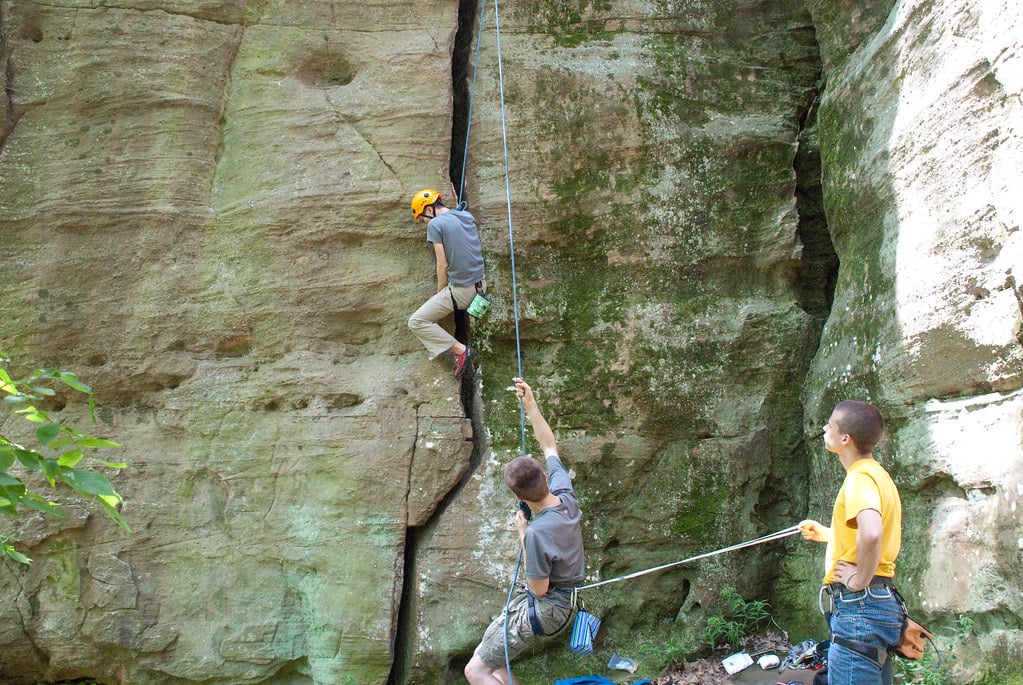
Offwidth climbing presents unique challenges and requires specific techniques to navigate wide cracks effectively. Here are some tips to enhance your offwidth climbing skills and increase your chances of success:
Proper Technique and Body Positioning
- Learn offwidth climbing techniques: Familiarize yourself with offwidth climbing techniques such as “chimneying,” “chicken winging,” and “stacking”. These techniques involve utilizing your entire body to make progress in the crack. Practice these techniques to develop muscle memory and improve your efficiency.
- Utilize taping: Transitioning from traditional crack climbing to offwidth climbing requires increased hand protection. Use an effective taping technique that covers the backs of your hands and thumbs to prevent injuries and provide better grip on smooth granite cracks. More tape is generally used in offwidth climbing compared to regular crack climbing.
- Maintain proper body positioning: Position your body properly within the crack to maximize stability and minimize energy expenditure. This may involve utilizing knee jams, calf locks, or heel-toe camming techniques. Experiment with different body positions to find what works best for each offwidth section.
Protective Measures and Clothing
- Wear appropriate clothing: Offwidth climbing can be abrasive and demanding on the body. It is recommended to wear full-coverage clothing, including long sleeves or cycling sleeves for the upper body and leggings for the lower body. Knee pads are also beneficial, especially for climbs that involve chimney sections, to protect your knees from bruising. Comfortable and well-fitting clothing allows for better flexibility and protection, preventing hindrance in tight calf locks.
- Use specialized protective gear: Offwidth climbing can be harsh on your hands and body. Consider using specialized protective gear such as hand jammies, wide crack gloves, or wrist guards to minimize discomfort and potential injuries. These gear options provide extra padding and protection where it is most needed.
Belaying and Rope Management in Offwidths
- Maintain a tight belay: When belaying a climber on an offwidth route, it is crucial to keep a tight belay. This prevents the rope from getting pinched between the climber’s body and the rock, reducing the risk of accidents or injuries. Keep the rope taut to provide a secure belay and minimize slack pooling up on the climber’s lap (Source).
- Practice efficient rope management: Offwidth climbing often involves bumping cams along as you climb. This technique allows for safe protection on challenging sections. Learn how to efficiently manage the rope, keeping one cam pushed as deep as possible in front of you while having another cam above you. This ensures continuous protection and minimizes the risk of dangerous falls.
By implementing these tips and techniques, you can enhance your offwidth climbing abilities. Remember to always prioritize safety, use appropriate protective gear, and practice proper climbing techniques. With dedication and practice, you can overcome the challenges of offwidth climbing and conquer even the most challenging crack systems.

